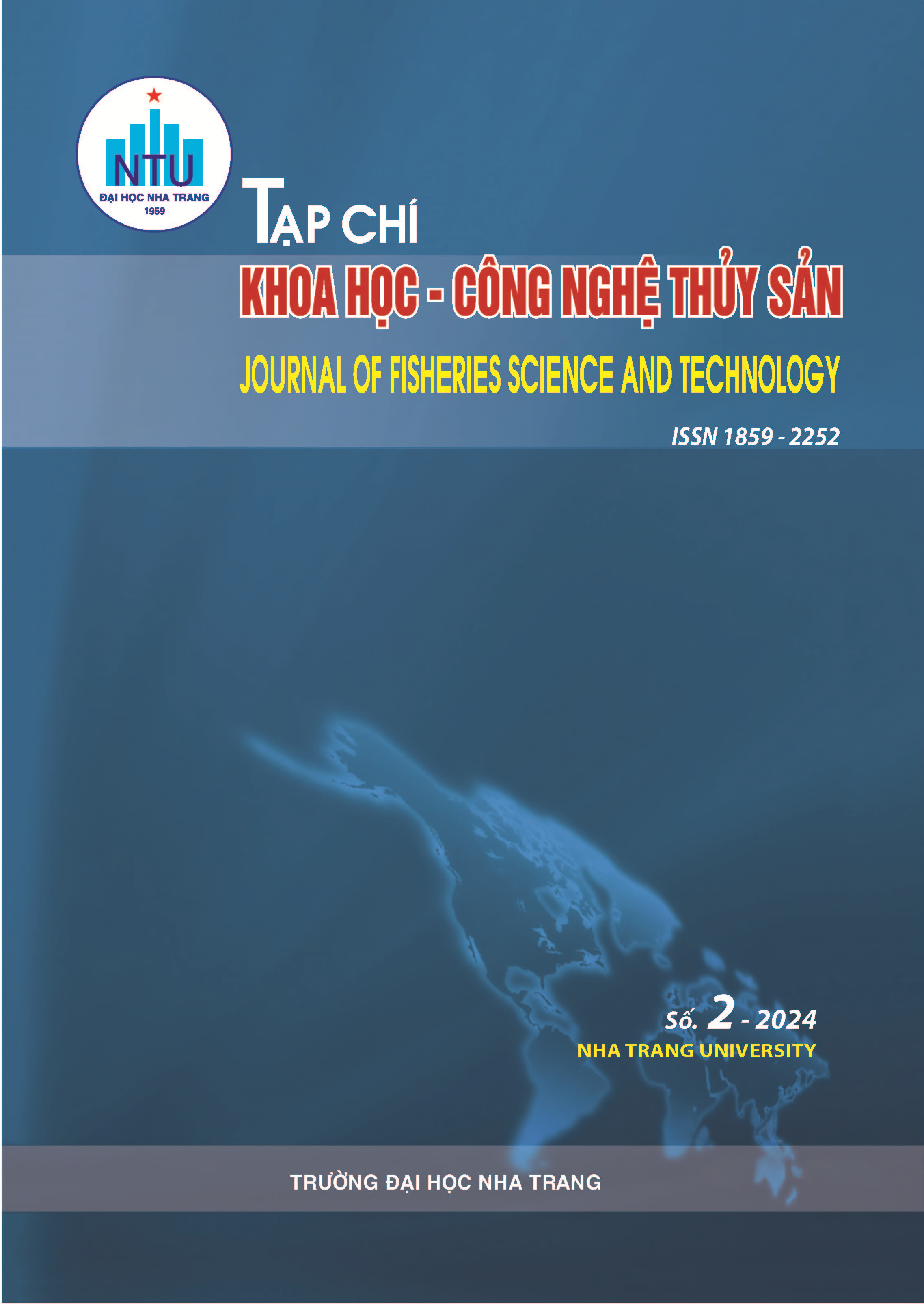##plugins.themes.huaf_theme.article.main##
Abstract
This study aimed to assess the effect of hormone on latency period, spawning rate, fecundity, fertilization rate, hatching rate, embryonic development time and survival rate of larvae 5 days after hatching of sand whiting. Four treatment groups were designed, each utilizing a different hormone: HCG (500 UI/kg of fish); LHRHa (20 µg/kg of fish); Ovaprim (0,5 mg/kg of fish) and a Control group. Each hormone treatment was replicated three times. The results revealed that the treatment with HCG demonstrated the highest spawning rate (66,70%), fertilization rate (64,64%), hatching rate (70,42%), length of newly hatched larvae (1,62 mm), and survival rate of larvae 5 days after hatching (75,70%), with statistical significance (p<0,05). However, there was no significant difference between the treatment using HCG and Ovaprim (p>0,05). Additionally, no significant variations were found in embryonic development time, oil globule, yolk sac characteristics among treatments using different hormones (p>0,05). Consequently, the application of HCG at a dosage of 500 UI/kg of fish is suggested as an effective method for artificial breeding of sand whiting.
Keywords: Sand whiting (Sillago sihama), HCG, LHRHa, Ovaprim, breeding

